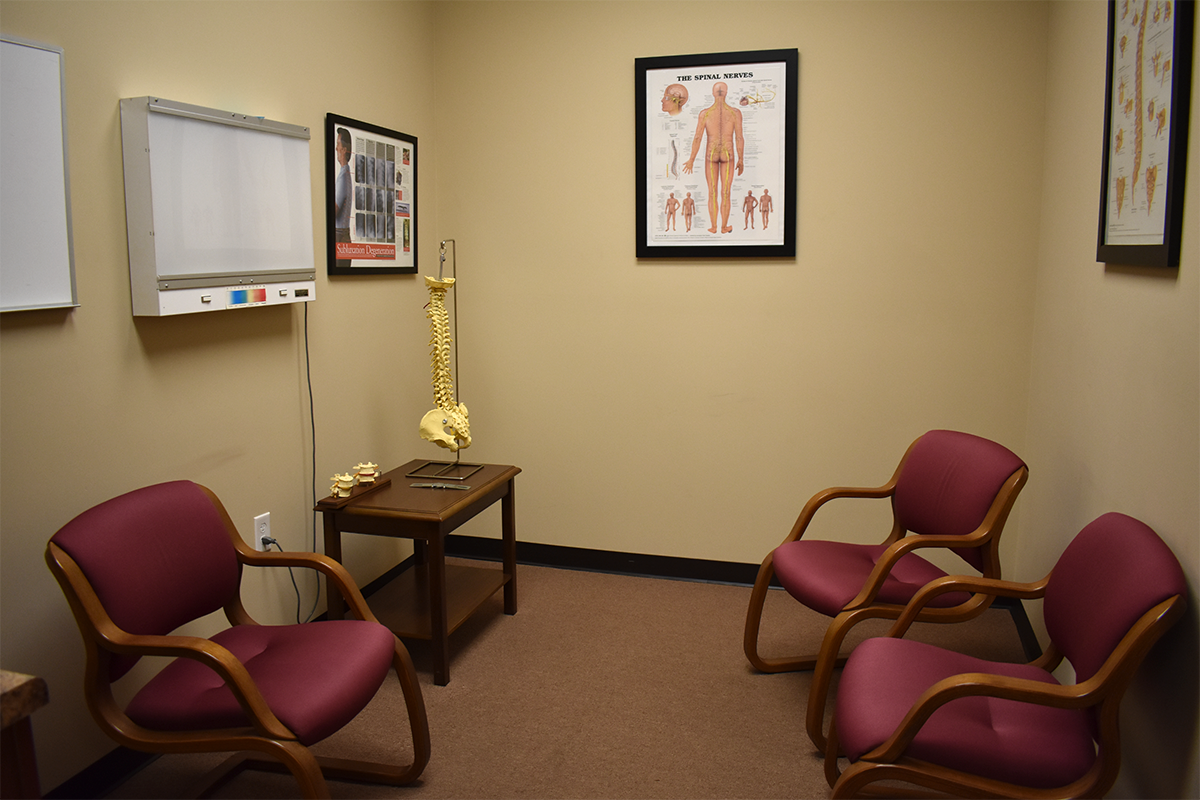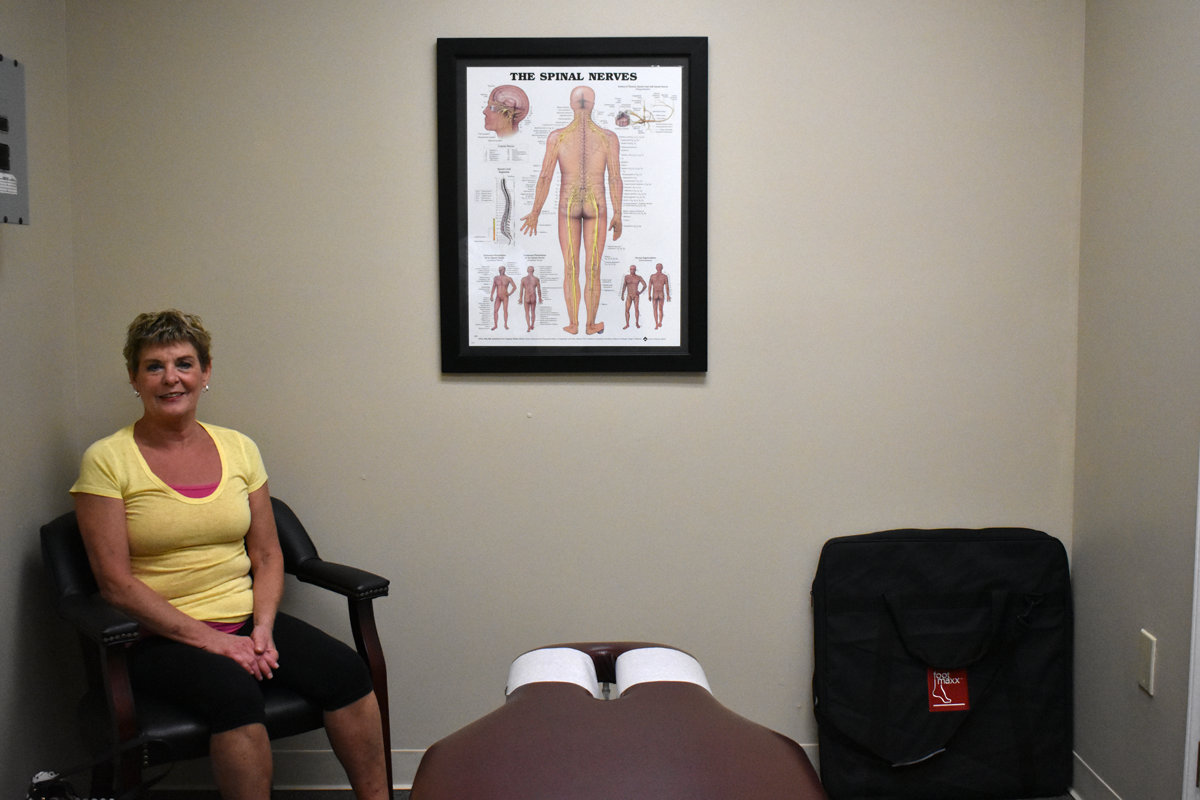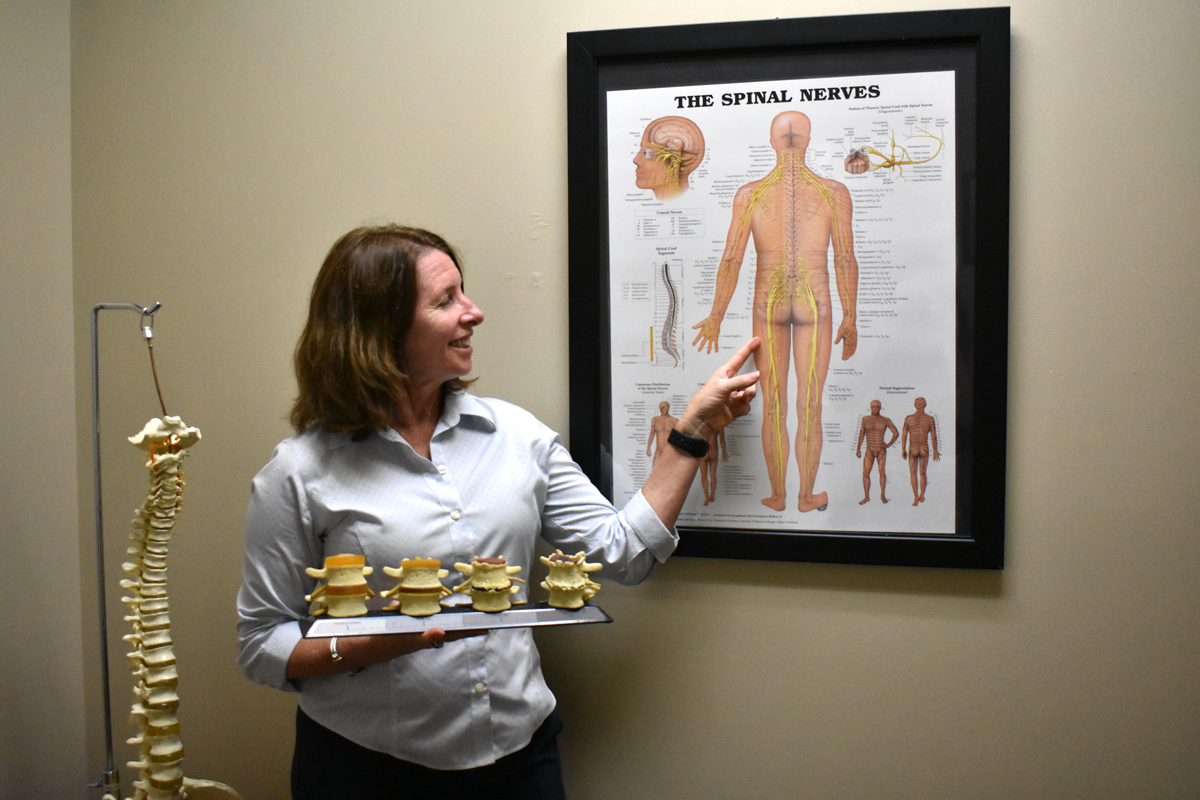How Webster's Technique Can Help Your Delivery

Bringing a child into the world is a beautiful thing, but it does cause a lot of changes to occur in the body. These changes can sometimes bring pain and discomfort. Chiropractic care is a proven, safe way to manage lower back pain and sciatica that often comes with the pressure of carrying a baby for 9 months. Receiving care throughout your pregnancy could help you manage these changes to your body and the strain the extra weight puts on your muscles and spine. But that’s not the only way chiropractic care can make a big difference during your pregnancy.
Webster Technique for a Safer Birth
When a baby is in a breeched position with their bottom in the position to be birthed first, the mother and child could face a high-risk delivery and often times a mandatory cesarean section. This is common in 3-5% of pregnancies. The Webster Technique is a specific chiropractic adjustment that is made to help a late-term pregnant woman whose baby is in the breached position. The doctor can safely manipulate the position of the baby to the proper delivery position.
Essentially, the Webster Technique adjusts the sacrum and relieves tension that is preventing the baby from moving into the proper position. Studies have shown that when the Webster Technique was employed early enough before delivery, 92% of patients were successfully manipulated into the correct position. This allows mothers to pursue a natural, low-risk birth.
Tuck Chiropractic Doctors Are Waiting to Help
Expectant mothers can embrace a safe, natural alternative to find relief during and after their pregnancy. All of our doctors are passionate about helping parents bring new life into the world safely and without unnecessary pain. Schedule an appointment at a clinic near you to find out how we can help.
About the Writer
tech
From Risk of Paralysis to New Found Independence

Barry Henry struggled with debilitating back pain since October of 2004. His journey was long, dark, and painful. He had seen doctors, endured shots, and even prepared himself for surgery. At one point, his doctor refused to operate on his back. He said that the risk for paralysis was too high risk to operate. Just when he thought he was out of options, his physical therapist recommended Tuck Chiropractic. His life was changed forever.
The Path To Independence
In October 2004, Henry woke up and couldn’t move from his bed. He back was in severe pain. This was just the start of what was soon to be years of painful back ailments. Henry was diagnosed with everything from herniated discs, to osteoporosis, and even sciatica. To say Henry was in pain is an understatement.
Then, in July of 2017 Henry hit rock bottom. During a stay in the hospital for a back-related injury, Henry developed sepsis. Sepsis is potentially life-threatening complication of an infection in the body that triggers widespread inflammation. It is particularly dangerous for the elderly. Thankfully, Henry was able to treat his sepsis. However, he was still feeling hopeless about ever returning to full health.
“I was just existing, I wasn’t living,” says Henry.
Henry’s back pain caused him to lose his independence. He began walking with a cane and had to rely on it for 12 years. He referred to it as his third leg. He said he started to feel guilty that he wasn’t able to keep up with household chores. His wife became his caretaker.
It was because of the recommendation to try a chiropractor from his Physical Therapist that Henry found Tuck Chiropractic Clinic in Bedford. That was when Henry started to find the relief he had dreamed of for 12 years.
Henry then made his first appointment to visit Dr. Earsing of the Bedford clinic. He walked in with a walker and hunched over like a “90-year-old man who had done hard labor his whole life” Henry says.
“Earsing told me he would try to help me. With my case being so advanced I think we both had our doubts. I was willing to try anything at that point,” says Henry.
After about 6 months of visiting Dr. Earsing, Henry was relying less and less on his cane. Eventually, he stopped needing it all together. His pain had reduced significantly. Henry was starting to live again.
“Even people at church who knew me and knew I walked with a cane, ask how I did it. I told them Dr. Earsing worked a miracle on me. He really cared about my health. I couldn’t do housework, but now I can. My pain has become manageable,” says Henry.
Henry has been a regular at the Bedford clinic for just about a year now and is enjoying his new life with limited pain. He feels intense gratitude towards Dr. Earsing and the rest of the staff at the clinic.
“I still can’t believe it. My quality of life has improved tremendously,” Henry says.
If you or someone you know is in pain, we want to help. Contact any of our clinics today to start your journey to a better you.
About the Writer
tech
Returning to An Active Lifestyle After Three Years of Limited Mobility

As a fitness instructor, car accident survivor, and sufferer of spinal stenosis, Yvonne Heath was no stranger to chiropractic care when she came into Tuck Chiropractic Clinic for help three months ago. She had even seen multiple doctors at the clinic over the past few years. This time, she was visiting Dr. Earsing for the first time in seek of relief from upper back and low back pain. Little did she know that asking for help for her knee out of sheer curiosity would lead to a life-changing treatment plan.
Three years ago, Yvonne had torn her meniscus and needed to get surgery to repair the damage. Despite a successful operation by a very talented surgeon, she hasn’t been able to walk properly since. The result of the surgery was limited flexibility and extreme tightness in the joint, surrounding muscles, and tendons – causing limited range of motion. At the time of her first visit, she was unable to straighten her leg.
For three years, Yvonne was kept from doing what she loves the most: hiking, going to the gym, yoga; even walking up stairs proved to be a challenge. Despite six long weeks of physical therapy, she wasn’t seeing progress in her recovery. Her surgeon eventually told her not to waste her money on therapy, that she would simply have to live with it for the rest of her life.
Because of the imbalance of her ability to walk, she began experiencing problems in other parts of her body. The resulting middle and lower back pain led her to Tuck Chiropractic Clinic. It was then that she asked about the possibility of a treatment for her knee.
“For some reason I didn’t really think they would be able to help me but I decided to ask anyway,” says Yvonne. “It’s like a miracle. My knee is never going to be perfect, but it’s so much better than I ever thought it would be.”
With the combination of multiple therapies, hands-on treatment, soft tissue therapy, and a lot of persistence from Dr. John and Yvonne, she has been able to return to a fairly normal gait and an active lifestyle. The muscles and tendons around the injury area had been shortened and distorted the muscles and tendons. With electrical stimulation therapy and ultrasound therapy, the muscles can begin to relax and allow for more movement during the manual adjustments and myofascial therapy techniques.
“Dr. John worked so hard on my knee,” says Yvonne. “So hard that I joke that he’s probably getting his daily work out just by adjusting and stretching me!”
For the first time in three years, Yvonne has returned to the gym – something she had enjoyed as a fitness trainer for her entire life. She can enjoy her workouts with more range of motion. She walks up and down stairs with ease. And she’s finally been able to begin hiking again. After being active for so long and taking three years off, it’s been incredibly rewarding to return back to the level of active lifestyle that she loves without having to take pain medication daily.
While joint and extremity adjustments aren’t the most common problems patients come into our clinics for, we are always eager and happy to help them regain their mobility. Because the body works so closely together, pain in certain areas often begets pain in other areas.
“You just end up grinding your joints down because your body is not aligned,” says Yvonne. “I would recommend that anyone over 40 start going to the chiropractor as a preventative measure. It’s important to start going early so that you don’t end up having to get surgery like I did.”
Yvonne goes on to add that she especially suggests visiting Tuck Chiropractic Clinic in Bedford if they are in the area. After seeing many chiropractors over time and three at our clinic, it’s clear that our continuity in quality care is a priority.
If you’re experiencing limited mobility and back pain due to overstrained joints or muscles, we can help. Our friendly staff are waiting to answer any questions and schedule your first appointment.
About the Writer
tech
Translating Your Chiropractor: Understanding Your Care Plan
At Tuck Chiropractic, we do our best to provide a warm welcome the minute you walk through the door – whether you’re a returning patient or a new inquiry. It’s important to us to make our patients as comfortable as possible from the first greeting to the final visit of their care plan. Part of that process is making sure we are clearly communicating with you. While medical terms and the idea of a care plan may feel overwhelming, our staff and doctors do a great job of walking you through each step to make sure you’re fully informed. We’re here to share with a few common terms and concepts to help you feel confident and capable of truly collaborating with our doctors to find the best treatments for you!

Common Chiropractic Terms
While we do our best to use clear language that both the doctor and the patient can share, there are still a few medical terms that come up during patient visits that may seem foreign. We’ll put them simply for you.
Misalignment or Subluxation
A Misalignment or subluxation – usually of the vertebrae. It can be a common cause of back pain and neck pain and may be a cause of other pain syndromes that patients present within our clinics. Our Tuck Chiropractic doctors will be able to pinpoint the area of misalignment with an X-ray and talk you through how spinal manipulation techniques can realign your spine.
Spinal Manipulation
Speaking of – what do we really mean by “spinal manipulation“? You may also hear the terms chiropractic adjustment or manual manipulation interchanged with this term. Simply put, this is when the doctor applies his or her hands or uses an instrument to apply pressure to the body in order to realign your vertebrae. It often includes a high-velocity thrust applied to the vertebrae. It sounds intense and you may experience a “popping” sound – but you’ll immediately feel a sense of release in the affected joints.
Electrical Muscle Stimulation
Electrical Muscle Stimulation Therapy is frequently coupled with spinal manipulation treatments as a way to stimulate the muscles surrounding the area in pain. In this way, chiropractors can truly treat the entire musculoskeletal system to help relieve pain and tension. It’s often used before a manipulation to “warm up” the muscles by sending a low-level electrical current through a number of electrodes placed in the affected areas.
Common Phases of Care
It’s important to realize that chiropractic care isn’t a quick fix. It is a process of adjusting the body to its natural state of alignment to relieve pressure and pain. Our doctors work hard to help patients understand every step of the process from intake to outcome review, and beyond. Here’s what to expect from your collaborative care process.
Intake Process
The intake process is painless. Our friendly staff helps you fill out your paperwork and often times, you will receive an X-ray to help the doctor identify the point of misalignment. With this, the doctor will be able to walk you through the treatments you will receive to begin the process of healing and perform the first adjustment. We will never force you into a treatment that you are uncomfortable with. Our priority is your comfort and confidence.
Customized Treatment Plan
Based on your Examination, the intensity of the problem, and your personal goals for feeling better, your doctor will talk you through your adjustment regimen. Often times, there will be a higher frequency of adjustments during the first portion of your care to build upon each adjustment for more effective results. It will begin to taper off once the extended relief sets in.
Reviewing Outcomes
We check in with our patients often to make sure they are getting the results and relief they are seeking – typically every two weeks. This allows our doctors to make sure they’re helping patients meet their goals and to make any adjustments to their care plan that they see fit. Ultimately, this is the most important part of the process: making sure our patients are feeling better and living better.
Maintenance Care
At the end of a treatment cycle, maintenance care is discussed with the patient to see if they would like to continue their adjustments on a more varied basis. Maintenance care is a great way to maintain alignment and even act as a preventative measure for injuries and illnesses.
Do you have more questions about chiropractic care? Review our Frequently Asked Questions or reach out to one of our locations. Our staff and doctors are here to help!
About the Writer
tech
When The Right Person Reads the X-Ray

Some people live half of a lifetime before finding someone that can help them manage their back pain. When Patty ended up in the Emergency Room as the result of excruciating back pain, she knew it was time to seek out other options to find relief. Two days later, this led her to her first appointment with Dr. Kilmer. Seven years later, Patty still sees Dr. Kilmer as regularly as possible.
An X-Ray Can Reveal The Answer
Patty’s first appointment was incredibly eye-opening. After struggling to find out why she had so much back pain for so long, Dr. Kilmer looked over her X-rays and discovered the problem. It turned out that Patty had an extra vertebra in her lumbar spine – which can sometimes lead to instability and extra stress in the spine.
“After that, I didn’t have any reservations about coming because she was the first person to tell me that,” she says. “She followed me for several months after that. It was an amazing recovery to go from excruciating pain to very little pain.”
She began to see results after just a few visits and was able to learn more about her spinal condition and ways to manage it. As life brought new challenges, she and Dr. Kilmer tackled them together.
Maintaining an Active Life
Patty is a tap dancer and tries to stay as active as possible with her grandchildren. Sometimes, this can lead to an unforeseen tumble every now and then, which often results in injury. With the right treatments, she’s able to recover without the use of pain medication every time. When we asked how her continued use of chiropractic care has affected her life, she simply said “a lot!”
“I’m able to keep dancing and doing my exercises. It helps me maintain my wellness and allows me to keep working,” says Patty.
She feels strongly that anyone who is suffering from pain that they can’t seem to find help for to consider chiropractic care as an option, but with one condition: “It’s gotta be Dr. Susan!”
“She’s very thorough and spends the time with you that you need,” she adds. “I really feel like I am in good hands.”
About the Writer
tech
Research Round Up: The Effects of Integrating Chiropractic Care with General Care

At Tuck Chiropractic Clinic, collaboration means a lot of different things. It means communicating clearly with our patients to set attainable wellness and pain management goals; it means calling up a fellow chiropractor to hear their ideas on a new technique or challenge; it also means working with the wider healthcare community to provide a continuum of patient-centered care to provide the measure of support to each and every person we serve. Evidence shows that each of these methods of collaboration leads to higher satisfaction and better outcomes for the patients and the doctors involved.
As the healthcare specialists and generalists become more and more open to collaborating with chiropractors, more and more studies have shown the positive results. We’ve rounded up some incredible evidence of the effect that this type of collaboration has on the overall wellness of the public.
Chiropractic Integration into Private Sector Medical Facilities:
A Multi-site Qualitative Case Study
Anthony J. Lisi, DC, Stacie A. Salsbury, Ph.D., RN, Elissa J. Twist, DC, MS, and Christine M. Goertz, DC, Ph.D.,
Pain Research, Informatics, Multi-Comorbidities, and Education Center, VA Connecticut Healthcare System, West Haven, CT.
Summary: This qualitative study aimed to study the effects and process of incorporating chiropractic care into a conventional medical setting with the goal of integrated care that provides positive outcomes for patients in pain and reduce opioid use and abuse. The study took place in 9 different private sector medical facilities in the United States that have incorporated on-site chiropractic care. There were five hospitals and four clinics involved. Through the gathering of a variety of qualitative data types, the researchers found that the multidisciplinary teams engaged in inter-professional case management for patients with musculoskeletal issues. The research concluded that both patients and doctors showed high levels of satisfaction with the care provided.
Take-Aways: Because patient-centered care that focuses on the integration of medical disciplines achieves more effective outcomes, all parties involved are highly satisfied.
Read Full Text
Management of Back Pain-related Disorders in a Community With Limited Access to Health Care Services: A Description of Integration of Chiropractors as Service Providers
Peter C. Emary, DC, MSc, Amy L. Brown, DC, Douglas F. Cameron, DC,
Alexander F. Pessoa, DC, ICSSP, Jennifer E. Bolton, Ph.D., MA Ed
Summary: This study was designed to evaluate the impact of chiropractic service for patients with back pain in an integrated, multidisciplinary, primary care setting in Cambridge, Ontario, Canada. Patients were referred to the chiropractor by their medical doctor or nurse practitioner and were surveyed at their first and last appointments. Of the 93 patients surveyed, the mean age was 49 and 66% of them were unemployed. 77% of them reported constant back pain that lasted more than a month. Through three different questionnaires, researchers found that the vast majority reported significant improvements in pain and reduction in the use of pain medication. 77% also had no need to visit their primary care doctor during the course of their chiropractic care and 93% of them were satisfied with the service.
Take-Aways: When primary care doctors recognize the opportunity to treat back pain without pain medications, using chiropractic care, the outcomes show high patient satisfaction and relief.
Read Full Text
Interdisciplinary Practice Models for Older Adults with Back Pain: A Qualitative Evaluation
Stacie A. Salsbury, Ph.D., RN, Christine M. Goertz, DC, Ph.D., Robert D. Vining, DC,
Maria A. Hondras, DC, MPH, Ph.D., Andrew A. Andresen, MD, Cynthia R. Long, Ph.D.,
Kevin J. Lyons, Ph.D., Lisa Z. Killinger, DC and Robert B. Wallace, MD, MS
Summary: This qualitative evaluation focused on the treatment of low back pain in older adults 65 years or older. Often times, patients seek care from multiple providers or disciplines, however, the care is not often coordinated collaboratively, but siloed. The study aimed to evaluate the feasibility of a more patient-centered model of care that brings multidisciplinary doctors together. The trials compared the results of three different models for back pain treatment: usual medical care, concurrent medical care with chiropractic care; and collaborative medical and chiropractic care. Through various methods of gathering qualitative data, researchers found that while providers were willing to collaborate, logistics of sharing information and collaborating were difficult. When there was an open flow of communication between all parties, older patients reported satisfaction and positive results.
Take-Aways:
While best practices of interdisciplinary care are still being established, the integrated care model results in higher satisfaction for all parties.
Read Full Text
In Conclusion
The proof is in the patient outcomes. As integrated, patient-centered care models develop, it’s important for primary care doctors, physical therapists, chiropractors, and other disciplinary doctors to work together for the best outcome for the patients. When done right, doctors can work together to reduce the prescription of opioids for patients in pain.
About the Writer
tech
A Behind the Scenes Look At An Adjustment with Dr. Kilmer

On a sunny Wednesday afternoon, Dr. Susan Kilmer welcomed Ella back to the clinic for a low back adjustment with a friendly, familiar smile. That’s because Ella has been seeking chiropractic care from Dr. Susan for the past 19 years! In 1999, Ella sought out some relief from her general lower back pain and found Susan at her independent practice. She has been seeing her ever since and as a loyal patient, she continued to see her once Susan began working with Tuck Chiropractic as needed.
“I’m getting ready to go on a trip to Nebraska,” Ella shared with Dr. Kilmer.
A Behind the Scenes Look
With long car rides often comes lower back pain, so Ella had come for an adjustment to help relieve the pain she was currently experiencing and to prevent any discomfort on her long trek. This is a common occurrence for patients who travel. While most people see chiropractic care as a solution for active pain, it can be equally effective in preventing future pain.
Dr. Kilmer began her work in helping Ella to walk out feeling better and looking forward to her trip. Starting with an electronic massage device, Dr. Kilmer “warmed up” Ella’s lower back muscles to help the adjustment perform as much as possible. She also prefers to do some muscle work at trigger points across the back to make sure the muscles and spine are completely prepared for the adjustment. While not all chiropractors do this as a best practice, she finds that often times it can make a big difference in helping the patient relax enough for the adjustment to set in.
Decades And Generations of Finding Relief
There’s something to be said about working with a doctor that is familiar with you, your life, and your wellness needs. It’s clear that Ella and Dr. Kilmer have built up a strong relationship over the past two decades. Throughout Ella’s visit, she and Susan talked like family friends. In fact, Susan could even be considered an honorary member of the family. She has treated Ella’s in-laws, nieces, and nephews for their own pain management, too!
After a few adjustments in her lower back and neck, Ella was on her way and already discussing the possibility of another appointment before she leaves for her trip “just in case!”.
“Chiropractic has been very important to me and helping me maintain my mobility,” said Ella. She encourages anyone who is considering chiropractic to give it a try, and of course, see Dr. Kilmer.
As she began to say good bye to Dr. Kilmer and Brandy at the front desk, she exclaimed: “It already feels better, Susan!”
About the Writer
tech
Getting to The Root of a Lifetime of Migraines

When Amanda Terry walked into the offices of Tuck Clinic in Woodlawn to tell us about her experience with Dr. McKown, she was all smiles. You could tell that they had built a solid relationship that went far beyond a transactional treatment, but was built upon a foundation of trust and genuine care. However, we can imagine that her first visit to the office 5 years ago wasn’t quite as chipper. She had suffered from migraines since childhood and the issues only continued to worsen as she grew into adulthood.
“I tried every medication and technique you could try – from ibuprofen to prescription medications, nasal spray, specialty diets – I even tried a staple in my ear. Nothing worked,” says Amanda. “I was missing a lot of work and school and it got to the point where I had four migraines a week where I would lose vision and my speech was slurred.”
She had never tried chiropractic before but she had exhausted all of her other options. Her grandparents were familiar with Dr. McKown at Tuck Clinic and so she made her first appointment. After a series of x-rays, Dr. McKown discovered a pinched nerve that was causing her migraines and preventing her from finding relief through all of the other methods she had explored. What started out as a lost hope with no idea of what was going on with her body, turned into a moment of clarity and, finally, relief.
“I went once a week for a little while. Then my visits went down to once a month. I noticed a difference pretty immediately,” she recalls. “I would say it knocked my frequency of migraines down from ten a month to one a month.”
These days, Amanda almost forgets that she even had such severe migraines for most of her life. She often finds that if she gets a severe migraine out of the blue, it’s likely because she hasn’t been to see Dr. McKown in a while. She is now a lot more aware of her body and what it needs now. She’ll even come into the clinic before and after long trips to make sure her back stays in good shape, too.
“I really like the whole idea of overall wellness that lies behind the practice. It took her 3 years, but I finally started to do yoga! Over time, I’ve learned that exercise and wellness can really help calm my mind and help to ward off migraines.” says Amanda.
When talking to other people about seeking chiropractic care, she sometimes battles some preconceived notions. She simply argues that she is the living proof they need to show the value in the care that chiropractors are able to provide. After over 20 years of suffering, she can now function through her day to day tasks without worrying about being struck by a debilitating migraine.
“This is truly the only thing that has ever stopped them. I am proof,” she says.
She also adds that people try to use too many excuses. They don’t have the time to go often enough to get results. Or it costs too much money. But when she realized that she was missing her classes that she was paying thousands of dollars for at Radford University and missing the work that was paying for them, the money excuse was out of the question. Tuck Clinic can provide affordable treatments that far outweigh the cost of not being able to live your life properly because of pain.
About the Writer
tech
Finding Balance Between Sitting and Standing at Work
There is an endless supply of articles across the internet, and even on the Tuck Clinic Wellness Tips Blog, that recommend more time spent standing to combat lower back pain. While it can provide a great amount of relief from the pressure your lower back experiences from sitting, it certainly isn’t the end-all-be-all for back pain. Just ask Kristi Alvacorn, a teacher, who spends even more time standing at her occupation than sitting.

Kristi has been visiting Dr. Foster at Tuck Chiropractic Clinic in Bedford, VA for about a month and a half. As a teacher who stands a large percentage of the day, Kristi has had trouble standing up straight during class because of an extremely tight lower back. While she ultimately alternates between sitting and standing throughout the day, there was some sort of missing link that was preventing her from finding relief from her pain and tightness. It would seem that the missing link was chiropractic care!
This isn’t Kristi’s first round of seeking chiropractic care. She had visited a doctor in New York before she relocated to Southwest Virginia. When her pain returned, she didn’t think twice about finding a chiropractor that could see her quickly and would accept her insurance.
“It’s always very welcoming when you come in, so that’s nice. They almost know our name automatically when you walk through the door for your first visit,” said Kristi about her first appointment. “Dr. Foster talked me through the paperwork, provided a prognosis, and my first treatment on the spot.”
The Tuck Clinic Difference
Though Kristi had been to a chiropractor before. There was one element of her first visit that really set Tuck Clinic apart from the experience she had had before. Because Kristi had acute lower back pain, Dr. Foster bypassed any X-Ray imaging of her spine. In alignment with the American Chiropractic Care’s Five Pillars of Choosing Wisely, Tuck Clinic does not request X-Ray imaging on patients unless the pain experienced by the patient triggers a pre-determined list of red flags.
“At the other chiropractor, I went through a whole series of x-rays every time I went so it was nicer not to have to worry about that,” says Kristi.
Within the first three visits in the first week that Kristi had with Dr. Foster, she could feel a major difference. With the help of electrical stimulation and spinal manipulation, Kristi got over her first hurdle to find relief. Now, Kristi is down to one visit a week with therapeutic exercises on her own time. She also notes sleeping better after learning the positions she should sleep in for relief.
“I skipped last week and now I can feel the difference,” says Kristi. “I’m looking forward to enjoying my summer now!”
When asked if she had advice for anyone considering chiropractic care, she shared that it’s important to be persistent and consistent. Healing is a process and if you skip an appointment when your body isn’t ready, you’ll notice the difference.
About the Writer
tech
Five Tenants of Choosing Your Care-provider Wisely
As active leaders in both the chiropractic and wider medical industries, we take pride in being first in line to educate patients, the public, and anyone who will listen about the importance of providing supportive, conservative care to patients in need. While we do our best to go above and beyond for all of our patients, that doesn’t always mean providing more care than we need. To us, conservative care means finding the right treatment for an individual’s specific needs and nothing more.

Choosing Wisely
This concept is closely aligned with the American Board of Internal Medicine‘s (ABIM) Choosing Wisely initiative. Their most well known initiative, Choosing Wisely was built to address “waste” in healthcare. While no moment spent with a patient is wasted, it is often found that patients may receive more care or treatment than they actually need. Their official mission is “to promote conversations between clinicians and patients by helping patients choose care that is:
- Supported by evidence
- Not duplicative of other tests or procedures already received
- Free from harm
- Truly necessary”
While it is your choice to choose what type of practitioner to seek, it’s our duty as leader in the chiropractic industry to discuss the fives ways you can be assured that you are “Choosing Wisely” when choosing your chiropractor based on the ABIM’s recommendations for chiropractic care:
1. Do not obtain spinal imaging for patients with acute low-back pain during the six (6) weeks after onset in the absence of red flags.
Chiropractors who closely follow best practices will look for red flags before recommending spinal imaging. Because imaging tests often incur additional cost of care, it is in the best interest of the patient to refrain from imaging unless there are extenuating circumstances that lead the doctor to believe it is absolutely necessary. Red flags can include history of cancer, a possible fracture, progressive neurologic symptoms and infection, as well as conditions that potentially preclude a dynamic thrust to the spine.
If your chiropractor requests x-rays when you are not experiencing chronic low-back pain or suspect a possible fracture, you may want to ask additional questions or seek another practitioner.
2. Do not perform repeat imaging to monitor patients’ progress.
Again, unnecessary imaging incurs unnecessary cost. Unless you are being seen for a severe, ongoing problem such as scoliosis, there is no need to leverage additional x-rays to track outcomes. At Tuck Clinic, we choose to track our outcomes by reviewing a combination of the custom care plan we provide to the patient as well as their perception of their treatments and the relief resulting from such treatments.
3. Avoid protracted use of passive or palliative physical therapeutic modalities for low-back pain disorders unless they support the goal(s) of an active treatment plan.
That sounds like a lot of chiropractor jargon, don’t you think? We’ll break this one down for you. Often times, chiropractors administer passive techniques such as heating and cooling, electrical stimulation, or ultrasound therapy to supplement chiropractic adjustments. These, alone, are not the solution to fixing the overall wellness of your body after an injury or even during maintenance visits. It is highly suggested that these treatments are paired with a therapeutic exercise program that empowers the patient to continue their wellness efforts outside of the office walls. After all, the ultimate goal is to get our patients feeling better and living better overall.
4. Do not provide long-term pain management without a psychosocial screening or assessment.
There are many common causes to long-term pain. Sometimes, it’s a severe injury that has been ignored for years. But sometimes, it could be the unexpected side effects of depression or anxiety. It is the duty of a chiropractor to do their due diligence to get to the root cause of pain, even if it includes a psychological issue.
5. Do not prescribe lumbar supports or braces for the long-term treatment or prevention of low-back pain.
As noted in our recent examination of low back pain and lumbar support devices, these are great tools for temporary support but should never be considered a long term fix for an issue. Providing passive support for the lower back with these devices have been shown to reduce strength in the back, leaving it even more vulnerable to pain and injury. If your doctor has prescribed one of these devices as a quick fix, you may want to seek an alternative opinion.
About the Writer
tech
You may also be interested in...

How Do Chiropractic Adjustments Work?
Chiropractic care focuses on the health and alignment of the spine, recognizing its vital role in overall well-being. A central component of… Read More

6 Types of Chiropractic Adjustments and How They Work
Chiropractic care is a popular form of healthcare focused on spinal health and overall well-being. Chiropractors use a variety of techniques to… Read More

7 Researched Benefits of Chiropractic Adjustments
Chiropractic care focuses on maintaining spinal health and addressing misalignments that can cause a variety of health issues. The practice is growing… Read More

How Chiropractic Care Can Help Ease Back Pain
Most people have felt the agony and discomfort of back pain. And while chiropractors treat more than just back pain, most people… Read More
